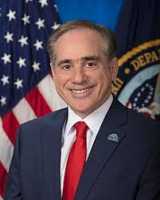Author Interviews, Global Health, Health Care Systems / 29.08.2019
A Look At The State of Healthcare In Top Nations

At least one half of the world’s 7.7 billion population do not have proper access to crucial health services. Even high-income countries with accessible and affordable healthcare are finding it difficult to meet the needs of their citizens. Meanwhile, in other parts of the world, millions of people spend a significant part of their household budget to be able to access health services -- some are even pushed into poverty as a consequence. Given these facts and statistics, a comprehensive understanding of health insurance can be crucial in encouraging people to seek healthcare services as well as avoid complications from preventable conditions. If you want to know more about the status of healthcare all over the world, here’s a look at the healthcare systems of three top nations.
The State of Healthcare In The United States
The United States is considered the most powerful country in the world; however, its healthcare system still lags behind other high-income countries. Currently, there is no universal healthcare for U.S. citizens. There are federal-funded programs such as Medicaid that provides health insurance to low-income populations, the elderly and people with disabilities. The Affordable Care Act, which aimed to provide health insurance to all, was enacted in 2010 under the Obama administration. However, this is being challenged by the Trump administration’s American Health Care Act of 2017, which also seeks major reforms to healthcare in the United States.
Currently, U.S. citizens who are employed full-time receive private insurance through their employers. While some self-employed individuals and part-time employees opt for private health insurance, many of them have to pay for health services out-of-pocket. In many cases, these expenses are beyond their means. As it stands, healthcare has become one of the hottest issues in the lead-up to the country’s upcoming 2020 elections.
(more…)




